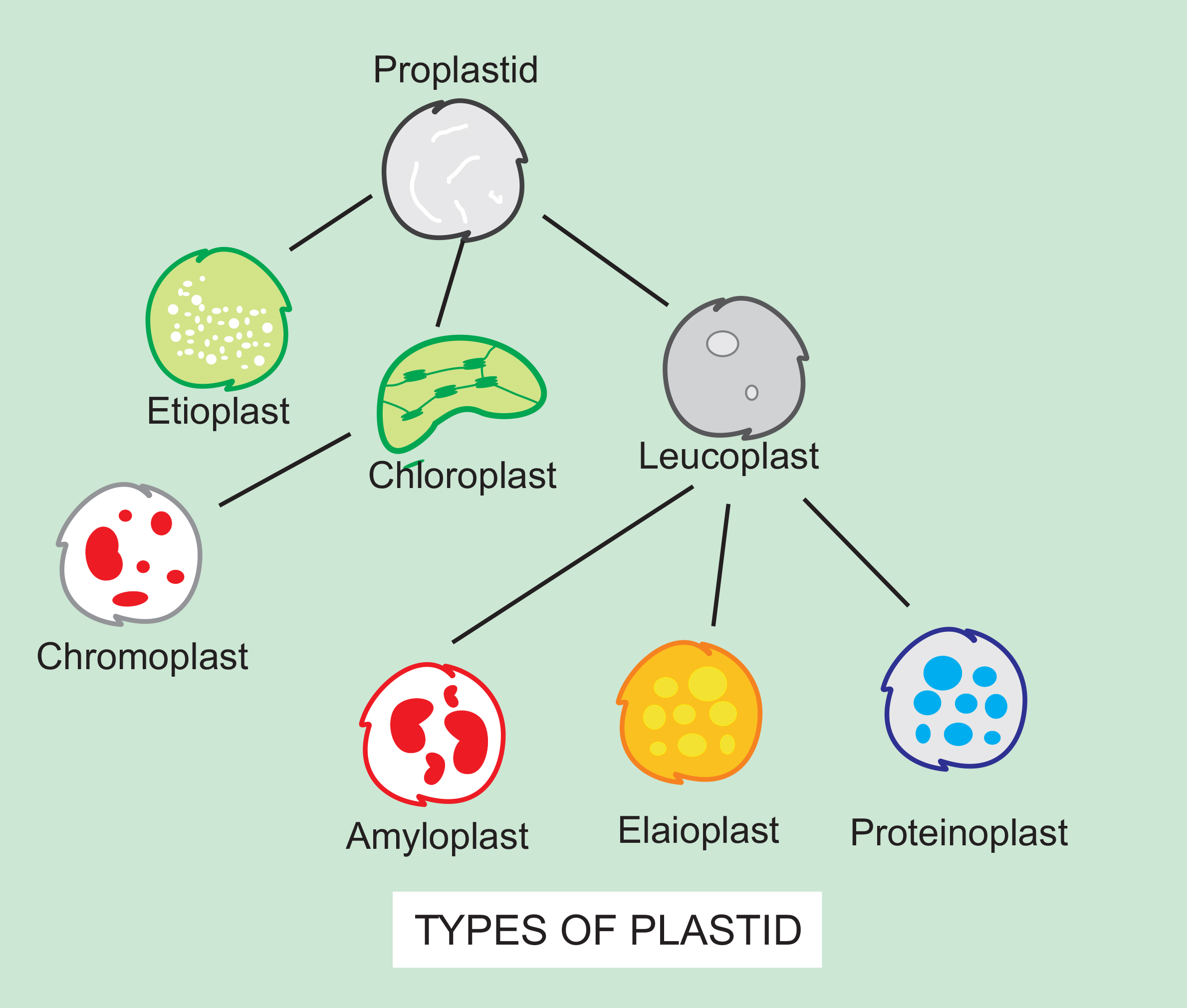
Answer
425.1k+ views
Hint: Plastids are membrane-bound organelles present in eukaryotes which helps in storage and synthesis of various organic compounds. It is mainly found in plant cells and protists and divided into three types on basis of its colour and functions.
Complete Answer:
The colourless plastids are called the leucoplast and their main function is the storage of food. Leucoplast is oval, spherical and rod in shape. It is found in fruits, seeds, tubers, and rhizomes of a plant and mainly stores food in the form of carbohydrates, lipids and proteins.

Based on storage, it is divided into amyloplasts, elaioplasts and aleuroplasts. Amyloplasts store starch in the form of simple or compound starch grains, elaioplasts store fats and aleuroplasts store protein in amorphous and crystalloids form.
Additional information: Chromoplasts are coloured plastids with the presence of red, yellow and orange pigments like xanthophyll and phycoerythrin. These pigments are fat-soluble carotenoids which form either from leucoplasts or chloroplasts. It also provides colour to many flowers and fruits.
Chloroplasts are green coloured plastids which help in photosynthesis. It only consists of chlorophyll pigments. Chloroplast helps in the synthesis of organic food from inorganic substances with the help of sunlight. Chloroplast number and size varies from species to species. In case of numbers, it ranges from one chloroplast one cell to hundred of chloroplasts in one cell.
So, the correct answer is ‘(d) Leucoplast, storage of food.’
Note: Plastids are considered as a semi-autonomous organelle due to the presence of its DNA and double membrane-bound organelles. This DNA is mainly found in chloroplast which helps in replication, transcription, synthesis of enzyme and production of proteins. The chloroplast is symbiotic in origin as mitochondria.
Complete Answer:
The colourless plastids are called the leucoplast and their main function is the storage of food. Leucoplast is oval, spherical and rod in shape. It is found in fruits, seeds, tubers, and rhizomes of a plant and mainly stores food in the form of carbohydrates, lipids and proteins.

Based on storage, it is divided into amyloplasts, elaioplasts and aleuroplasts. Amyloplasts store starch in the form of simple or compound starch grains, elaioplasts store fats and aleuroplasts store protein in amorphous and crystalloids form.
Additional information: Chromoplasts are coloured plastids with the presence of red, yellow and orange pigments like xanthophyll and phycoerythrin. These pigments are fat-soluble carotenoids which form either from leucoplasts or chloroplasts. It also provides colour to many flowers and fruits.
Chloroplasts are green coloured plastids which help in photosynthesis. It only consists of chlorophyll pigments. Chloroplast helps in the synthesis of organic food from inorganic substances with the help of sunlight. Chloroplast number and size varies from species to species. In case of numbers, it ranges from one chloroplast one cell to hundred of chloroplasts in one cell.
So, the correct answer is ‘(d) Leucoplast, storage of food.’
Note: Plastids are considered as a semi-autonomous organelle due to the presence of its DNA and double membrane-bound organelles. This DNA is mainly found in chloroplast which helps in replication, transcription, synthesis of enzyme and production of proteins. The chloroplast is symbiotic in origin as mitochondria.
Recently Updated Pages
Who among the following was the religious guru of class 7 social science CBSE

what is the correct chronological order of the following class 10 social science CBSE

Which of the following was not the actual cause for class 10 social science CBSE

Which of the following statements is not correct A class 10 social science CBSE

Which of the following leaders was not present in the class 10 social science CBSE

Garampani Sanctuary is located at A Diphu Assam B Gangtok class 10 social science CBSE

Trending doubts
A rainbow has circular shape because A The earth is class 11 physics CBSE

Which are the Top 10 Largest Countries of the World?

How do you graph the function fx 4x class 9 maths CBSE

Fill the blanks with the suitable prepositions 1 The class 9 english CBSE

The Equation xxx + 2 is Satisfied when x is Equal to Class 10 Maths

Find the value of the expression given below sin 30circ class 11 maths CBSE

What is the length of the alimentary canal in human class 11 biology CBSE

Give 10 examples for herbs , shrubs , climbers , creepers

What is BLO What is the full form of BLO class 8 social science CBSE




